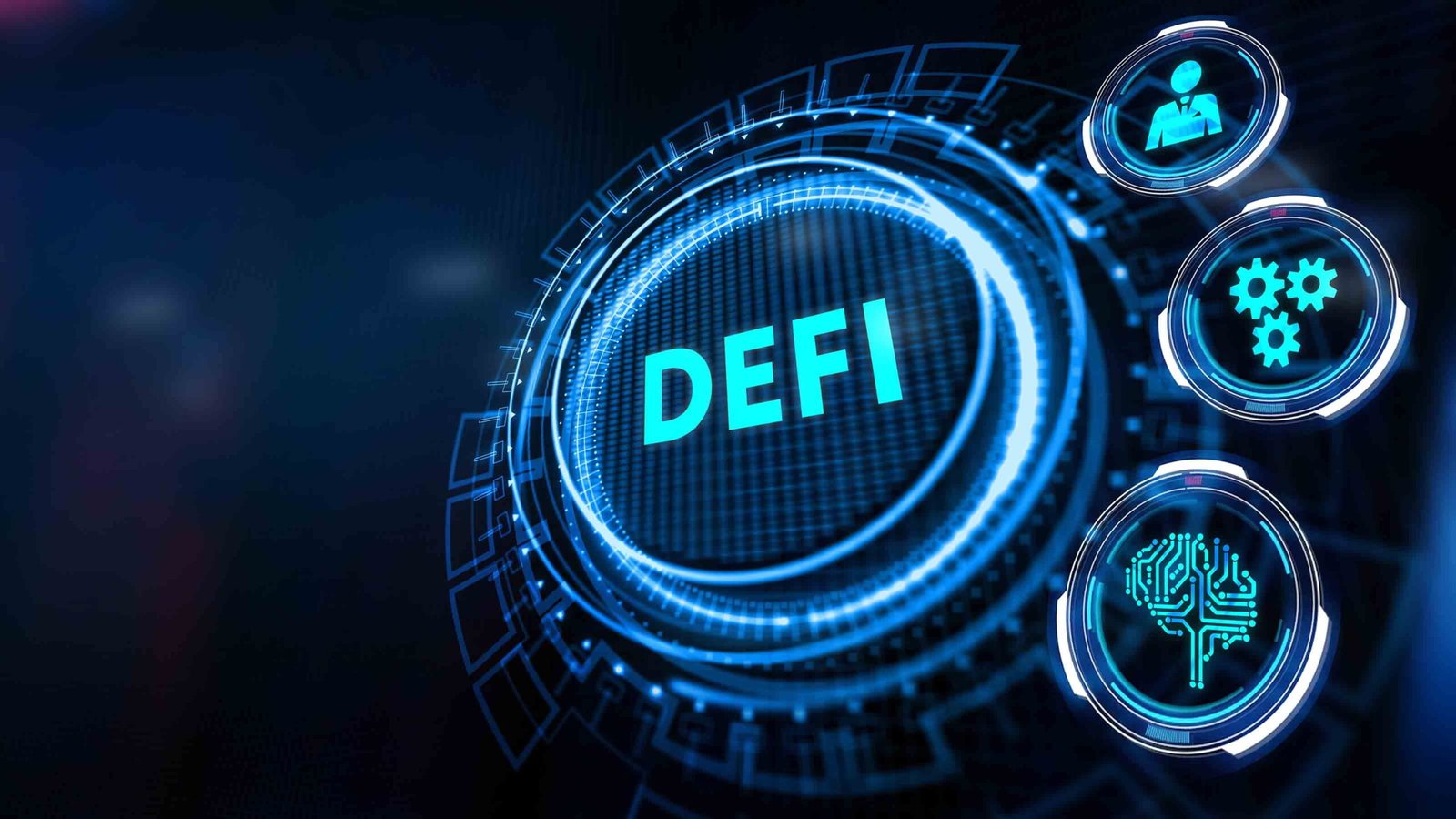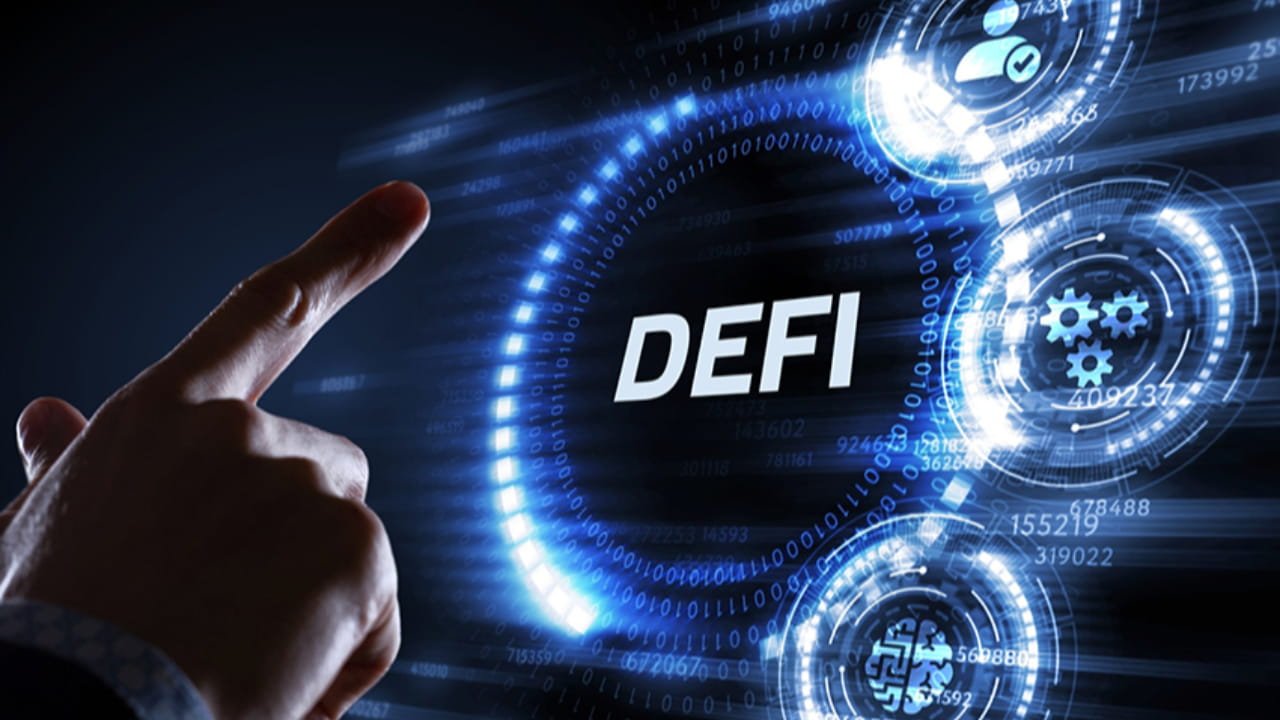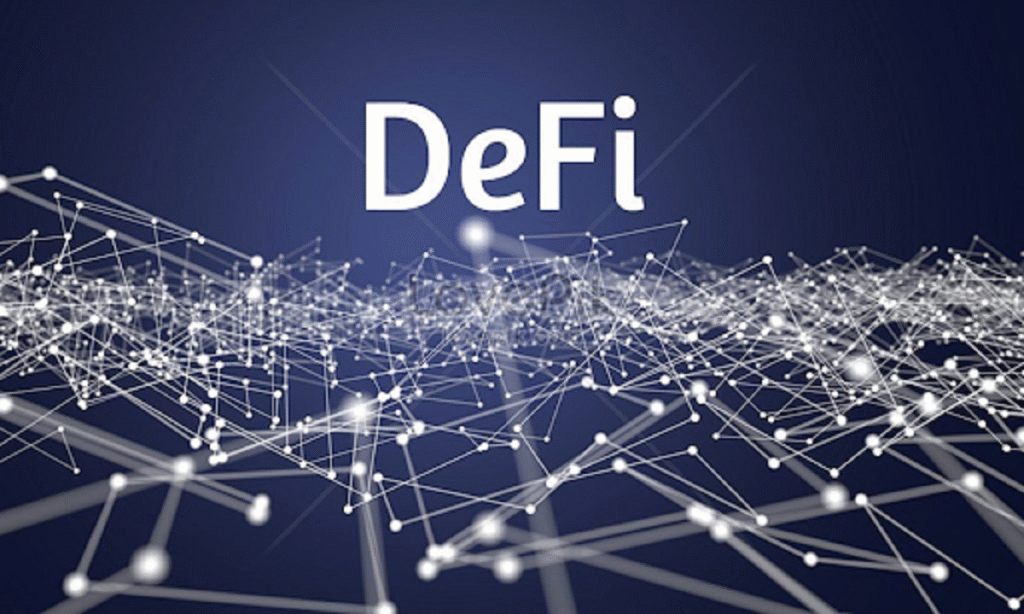The top Ethereum DeFi projects news continues to dominate headlines as decentralized finance reshapes the global financial landscape. With over $111 billion in total value locked (TVL) across DeFi protocols, Ethereum remains the undisputed leader in decentralized finance innovation. Recent developments show institutional adoption accelerating rapidly, with major players like BlackRock and Deutsche Bank making significant moves into the DeFi space. This comprehensive analysis explores the most influential Ethereum DeFi protocols, their latest developments, and what makes them essential for investors and developers in 2025. From liquid staking solutions to revolutionary lending platforms, these projects are transforming how we think about finance.
Current Market Overview of the Ethereum DeFi Ecosystem
The Ethereum DeFi ecosystem has experienced remarkable growth throughout 2025, with several projects reaching new milestones. Lido stands as a pioneering decentralized liquid staking platform, recognized for its enduring popularity with a staggering TVL exceeding $10.2 billion. This represents a significant portion of the entire DeFi market, showcasing the importance of liquid staking in the current ecosystem.
The diversity of DeFi applications has expanded dramatically, encompassing everything from decentralized exchanges (DEXs) to yield farming platforms. The Decentralized Finance (DeFi) market cap today is $111 Billion, a 0.4% change in the last 24 hours, demonstrating the stability and maturity the sector has achieved.
Institutional interest has particularly accelerated in 2025, with traditional financial institutions recognizing the potential of DeFi protocols. This shift represents a fundamental change in how institutional investors view decentralised finance, moving from scepticism to active participation.
Top Ethereum DeFi Projects News: Leading Protocols Driving Innovation
Lido Finance: Dominating Liquid Staking Solutions
Lido Finance continues to lead the liquid staking revolution, offering users the ability to stake Ethereum while maintaining liquidity. Lido is the largest liquid staking platform, with over $22 billion worth of ETH locked with it. It is also the largest DeFi project, accounting for a third of the entire sector.
What sets Lido apart from traditional staking is its issuance of liquid staking tokens (teeth) that represent staked ETH. These tokens can be used throughout the DeFi ecosystem while still earning staking rewards, providing unprecedented flexibility for users. The platform has expanded beyond Ethereum, now supporting Polygon (MATIC) and Solana (SOL) staking. This multi-chain approach positions Lido as a comprehensive staking solution in the evolving blockchain landscape.
Key features that make Lido a standout project include:
- No minimum staking requirements
- Instant liquidity through stETH tokens
- Continued earning of staking rewards
- Integration with major DeFi protocols
Uniswap: The DEX That Changed Everything
Uniswap (UNI) is one of the best DeFi projects in the industry, a decentralized exchange that has amassed billions of dollars in total value locked. The platform revolutionized cryptocurrency trading by introducing automated market makers (AMMs) and liquidity pools. Recent developments in Uniswap include the ongoing development of V4, which promises to introduce hooks and enhanced customization options.
This upgrade will enable more sophisticated trading strategies and improved capital efficiency for liquidity providers. The protocol’s influence extends beyond simple token swapping. Uniswap has become the foundation for numerous other DeFi projects, providing essential liquidity infrastructure for the entire ecosystem.
Notable Uniswap achievements:
- Pioneer of AMM technology
- Support for thousands of ERC-20 tokens
- Governance through UNI token holders
- Continuous innovation with version upgrades
Aave: Pioneering DeFi Lending and Borrowing
Aave is one of the earliest DeFi projects on Ethereum back in 2020 when DeFi was just coming into being. The open-source, non-custodial protocol allows lenders to earn interest through deposits and borrowers to borrow assets. With approximately $7 billion in TVL, Aave has established itself as the premier lending protocol in DeFi.
The platform’s innovative features include flash loans, which allow users to borrow assets without collateral as long as the loan is repaid within the same transaction. Aave’s expansion to multiple networks, including Arbitrum, Optimism, and Polygon, demonstrates its commitment to scaling and providing users with lower-cost alternatives to Ethereum mainnet transactions.
Recent Aave developments:
- Multi-chain deployment across 8 networks
- Enhanced security with audits from 6 security firms
- $300 million backstop fund for protocol security
- Introduction of new collateral types and markets
Defi Lending Platforms and Yield Generation Opportunities

Compound Finance: The Original DeFi Lending Protocol
COMP has established itself as a prominent player in the DeFi space by offering users the ability to earn compound interest on their crypto holdings. Launched in 2018, Compound pioneered many concepts that are now standard in DeFi lending. The protocol’s innovation lies in its algorithmic interest rate model, which automatically adjusts rates based on supply and demand.
This creates efficient markets for cryptocurrency lending and borrowing without requiring traditional intermediaries. Compound’s token system allows users to represent their deposits as transferable tokens, enabling complex DeFi strategies and composability with other protocols.
MakerDAO and Sky Protocol: Stablecoin Innovation
MakerDAO pioneered decentralized finance (DeFi) by introducing a decentralized governance model. The project aims to create a more inclusive financial system by enabling access to its borrowing marketplace and trustless financial applications. The platform’s DAI stablecoin remains one of the most important assets in DeFi, providing price stability in an otherwise volatile cryptocurrency market.
Recent developments include the transition to Sky Protocol and the introduction of USDS as an evolved stablecoin offering. MakerDAO’s governance model, where MKR token holders vote on important protocol decisions, has become a template for many other DeFi projects seeking decentralized decision-making processes.
Decentralized Exchanges and Trading Innovation
Curve Finance: Optimized for Stablecoin Trading
Curve Finance has carved out a unique niche in the DEX landscape by specializing in stablecoin and similar-asset trading. The platform’s low-slippage trading mechanism makes it ideal for large stablecoin swaps, which are essential for many DeFi strategies. The protocol’s innovative tokenomics include vote-escrowed CRV (veCRV) tokens, which provide governance rights and boost rewards for liquidity providers. This system creates long-term alignment between the protocol and its users. Curve’s integration with other DeFi protocols, particularly lending platforms, allows users to earn multiple streams of yield on their deposited assets.
Synthetix: Synthetic Asset Innovation
Synthetix (SNX) is a trading platform on Ethereum and Optimism. It allows users to mint and trade synthetic assets (synths), which mimic the price of real-world and digital assets. The platform enables exposure to assets that might otherwise be difficult to access in DeFi, including commodities, forex, and traditional stocks. This bridges the gap between traditional finance and decentralized finance. Synthetix’s debt pool mechanism, where all synthetic assets are backed by a shared pool of SNX collateral, creates unique risk-sharing dynamics among protocol participants.
Infrastructure and Oracle Solutions
Chainlink: Connecting DeFi to Real-World Data
Chainlink is the undisputed leader. If you’ve ever wondered how decentralized applications access off-chain information like prices or weather data, it’s all thanks to oracles. Chainlink’s Oracle network has become an essential infrastructure for most major DeFi protocols. By providing reliable price feeds and external data, Chainlink enables smart contracts to interact with real-world information. The protocol’s extensive partnerships across multiple blockchains make it a critical component of the broader DeFi ecosystem, supporting everything from lending protocols to prediction markets.
Recent Chainlink developments include:
- Expansion to multiple blockchain networks
- Enhanced security through decentralised Oracle networks
- Integration with major DeFi protocols like Aave and Synthetix
- Development of new Oracle services beyond price feeds
Emerging Trends in Ethereum DeFi Projects

Institutional Adoption and Integration
In 2025, “traditional institutions are likely to transition on-chain faster than expected,” Paul Frambot, CEO and co-founder of DeFi lending protocol Morpho, told DL News. This represents a significant shift in how traditional finance views decentralized protocols. Major developments include BlackRock’s BUIDL fund expansion and Deutsche Bank’s announcement of building its own Ethereum Layer 2. These moves signal growing institutional confidence in DeFi infrastructure and protocols. The incoming Trump administration’s pro-crypto stance is expected to accelerate institutional adoption by providing clearer regulatory frameworks for DeFi participation.
Layer 2 Solutions and Scalability
Daniel Wang, co-founder of Taiko Labs, the firm behind layer 2 blockchain Taiko, told DL News that he sees more fragmentation within Ethereum and the projects building on it in 2025. This fragmentation is driving innovation in interoperability solutions. Many top DeFi projects are expanding to Layer 2 networks to reduce transaction costs and improve user experience. This multi-chain approach is becoming essential for maintaining competitiveness in the DeFi space.
Real-World Asset Integration
The integration of real-world assets (RWAs) into DeFi protocols represents a significant growth opportunity. Projects are increasingly exploring ways to tokenize traditional financial instruments, real estate, and other physical assets. This trend bridges the gap between traditional finance and DeFi, potentially unlocking trillions of dollars in value for the decentralized finance ecosystem.
Investment Strategies and Risk Management
Yield Farming and Liquidity Mining
The top Ethereum DeFi projects continue to offer attractive yield opportunities through various mechanisms. Liquidity mining programs incentivize users to provide capital to protocols in exchange for governance tokens and fee shares. Understanding the risks associated with yield farming is crucial for successful DeFi investment. These include impermanent loss, smart contract risks, and protocol governance risks. Diversification across multiple protocols and strategies can help mitigate these risks while capturing the upside potential of DeFi innovation.
Security Considerations
DeFi smart contracts are vulnerable. If there is a slight flaw or mistake in the code of a smart contract, it can lead to a loss of funds. This highlights the importance of due diligence when selecting DeFi protocols. Top-tier projects undergo extensive security audits and maintain bug bounty programs to identify and address potential vulnerabilities. Users should prioritize protocols with strong security track records and comprehensive audit histories.
Read More: How to Analyse Coin Price Movements: A Complete Guide for 2025
Future Outlook for Ethereum DeFi Projects
Technology Roadmap and Innovation
The Ethereum ecosystem continues to evolve with the ongoing implementation of scaling solutions and protocol upgrades. These improvements will enhance the user experience and enable new types of financial applications. Cross-chain interoperability is becoming increasingly important as the DeFi ecosystem expands beyond Ethereum to other blockchain networks. Projects that successfully navigate this multi-chain future are likely to see continued growth.
Regulatory Environment
Unclear crypto regulations — particularly in the US — meant many financial institutions held off on experimenting with DeFi, lest they fall foul of securities laws. But with a pro-crypto Trump administration just around the corner, that could soon change. Clearer regulatory frameworks are expected to drive increased institutional participation in DeFi, potentially leading to significant capital inflows and protocol development.
Market Expansion
My final prediction is that 2025 will be the year fintech apps finally start bringing DeFi to the masses. This mainstream adoption could dramatically increase the user base and total value locked in DeFi protocols. Projects that focus on user experience and accessibility are likely to benefit most from this trend toward mainstream adoption.
Investment Opportunities and Portfolio Strategies
Building a Diversified DeFi Portfolio
A well-balanced DeFi portfolio should include exposure to different protocol types and use cases. This might include liquid staking tokens, governance tokens from major protocols, and yield-bearing assets from lending platforms.
Consider allocating investments across:
- Infrastructure projects like Chainlink
- DEX tokens like UNI
- Lending protocol tokens like AAVE and COMP
- Liquid staking derivatives like teeth
Risk Assessment and Management
Each DeFi protocol carries unique risks that investors must understand. Smart contract risk, governance risk, and market risk all play important roles in investment outcomes. Regular portfolio rebalancing and staying informed about protocol developments can help manage these risks while capturing growth opportunities in the evolving DeFi landscape.
Technical Analysis and Protocol Comparisons
Performance Metrics and Evaluation Criteria
When evaluating DeFi projects, several key metrics provide insight into protocol health and growth potential. Total Value Locked (TVL) indicates user confidence and capital efficiency, while transaction volume shows actual usage and adoption. Revenue generation through fees demonstrates protocol sustainability and value creation for token holders. Governance participation rates indicate community engagement and decentralization levels.
Interoperability and Cross-Chain Functionality
Modern DeFi projects increasingly focus on multi-chain compatibility to capture opportunities across different blockchain ecosystems. This includes deployment on Layer 2 solutions like Arbitrum and Optimism, as well as expansion to alternative Layer 1 networks. Cross-chain functionality enables projects to access liquidity and users from multiple sources, reducing dependence on any single blockchain network.
Conclusion
The landscape of top Ethereum DeFi projects news continues to evolve at breakneck speed, with institutional adoption, technological innovation, and regulatory clarity driving unprecedented growth in 2025. From Lido’s dominance in liquid staking to Uniswap’s continued innovation in decentralized trading, these protocols are reshaping the future of finance.
As traditional financial institutions embrace DeFi and new scaling solutions improve user experience, the opportunity for both institutional and retail investors continues to expand. Success in this space requires staying informed about the latest developments, understanding the risks involved, and maintaining a diversified approach to DeFi investments.
FAQs
What are the top Ethereum DeFi projects by TVL in 2025?
The largest Ethereum DeFi projects by Total Value Locked include Lido Finance (over $10.2 billion), Aave ($7 billion), Uniswap, MakerDAO, and Compound. These protocols represent the core infrastructure of the DeFi ecosystem and continue to dominate in terms of user adoption and capital allocation.
How do I safely invest in top Ethereum DeFi projects news?
Start by researching protocols thoroughly, including their security audits, team backgrounds, and governance mechanisms. Begin with small amounts, diversify across multiple protocols, and always use reputable wallets. Stay updated with the latest news and developments, as the DeFi space evolves rapidly with new opportunities and risks emerging regularly.
What makes Ethereum DeFi projects different from traditional finance?
Ethereum DeFi projects operate without intermediaries, use smart contracts for automation, provide 24/7 access to financial services, and often offer higher yields than traditional finance. They also provide transparency through blockchain technology and enable programmable money through composable protocols that can interact with each other seamlessly.
Which Ethereum DeFi projects offer the best yields in 2025?
Yield opportunities vary significantly based on market conditions and risk tolerance. Liquid staking through Lido offers relatively stable returns, while yield farming on protocols like Curve and Convex can provide higher but more variable returns. Always consider the risks associated with higher yields, including smart contract risk and impermanent loss.
How do institutional investments affect top Ethereum DeFi projects?
Institutional investments bring significant capital inflows, increased legitimacy, and improved infrastructure development to DeFi projects. However, they may also lead to increased regulation and potentially reduced yields as competition for opportunities increases. Overall, institutional adoption is viewed as positive for the long-term growth and stability of the DeFi ecosystem.
















